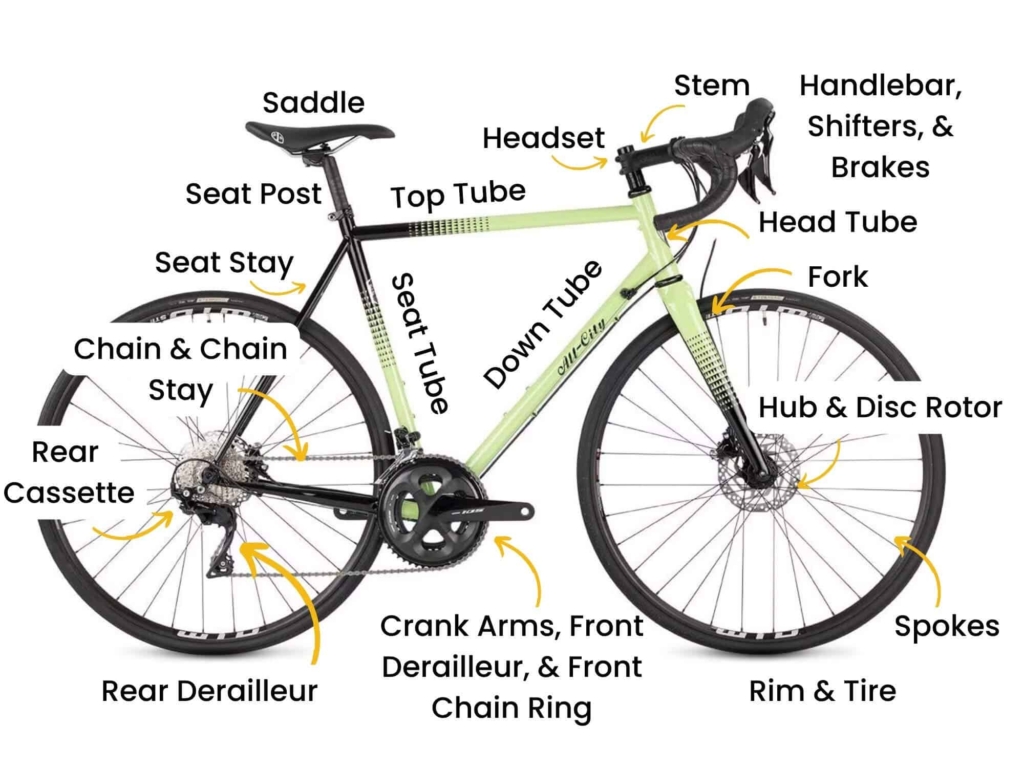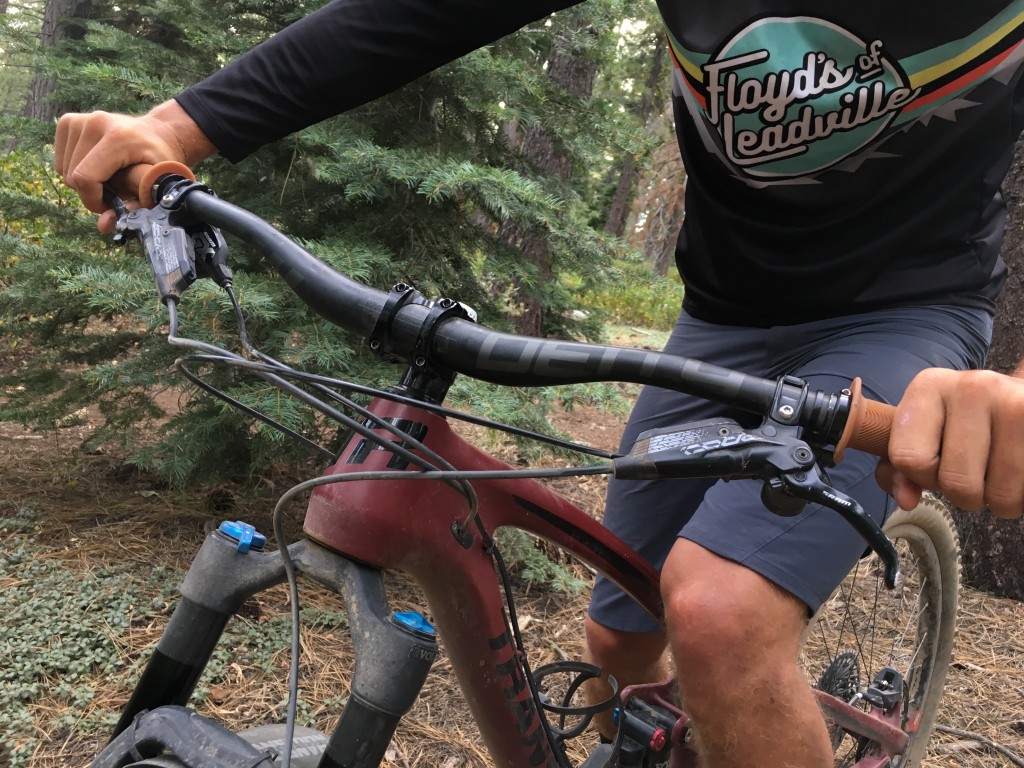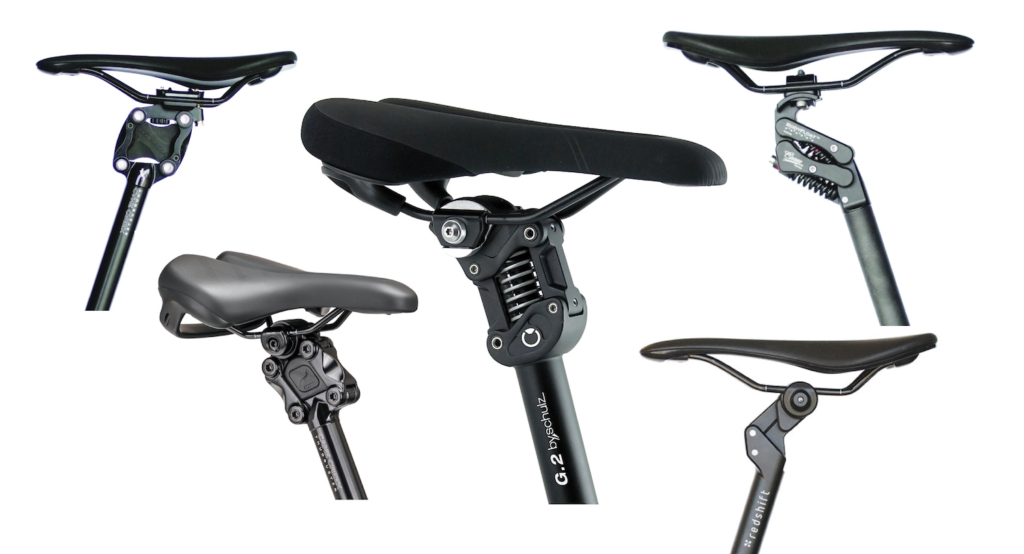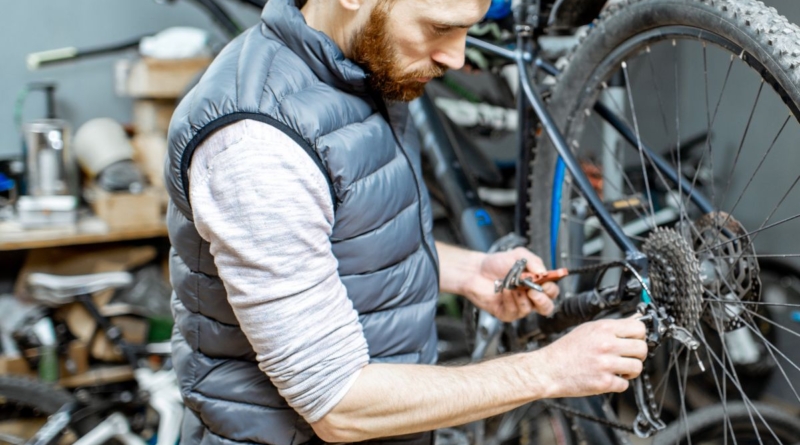Bike Components: A Complete Guide to All Parts of a Bicycle
Hey there, fellow adventurers and bike enthusiasts! Have you ever been captivated by the sight of a sleek, speedy bicycle cruising down the road? Perhaps you’ve felt a pang of envy as you watched a cyclist effortlessly navigate through traffic, feeling the wind in their hair. Well, my friends, it’s time to let you in on a little secret: understanding bicycle parts is the key to unlocking a whole new world of cycling joy!

Whether you’re a complete novice or someone who’s been curious about bicycles for a while, this blog is your ultimate guide to demystifying the intricate world of bicycle parts. We’ll take you from zero to hero, equipping you with the knowledge needed to choose the perfect bicycle for your needs and identify those crucial components that keep it rolling smoothly.
The Essential Bicycle Parts
Think of these parts as the building blocks that come together to create your two-wheeled companion. By familiarizing yourself with these essential bicycle parts, you’ll gain a deeper understanding of how they contribute to your riding experience.
Frame: The foundation of the bicycle

The frame serves as the backbone of your bicycle, providing strength, stability, and support. It’s crucial to understand the different materials and types of frames available, such as aluminum, steel, carbon fiber, and titanium. Each material offers unique characteristics in terms of weight, stiffness, and durability. When choosing a frame, considerations such as riding style, terrain, and personal preference come into play. We’ll explore these factors to help you select the perfect frame for your needs. You can also check Bike Frame Materials: A Complete Guide for Cyclists
Wheels and Tires: Connecting the bike to the road

The wheels and tires are your bicycle’s connection to the road or trail. They not only provide support but also influence your ride quality and handling. Wheels consist of rims, spokes, and hubs, and their construction affects factors like weight, stiffness, and aerodynamics. Tires come in various types, such as slick, hybrid, and knobby, each designed for specific terrains and riding styles.
Rims: The rim is the outer circular part of the wheel. It can be made of materials like aluminum, steel, or carbon fiber. The rim’s construction affects crucial factors such as weight, stiffness, and aerodynamics. Lighter rims can improve acceleration and maneuverability, while stiffer rims enhance power transfer. Aerodynamic rims minimize drag, making them suitable for faster riding or racing.
Spokes: Spokes are thin metal rods that connect the rim to the hub. They provide support and evenly distribute forces throughout the wheel. The number and pattern of spokes can vary, influencing the wheel’s strength and weight. Wheels with more spokes tend to be stronger but slightly heavier, while wheels with fewer spokes offer reduced weight but may sacrifice some durability.
Hubs: The hub is the central component of the wheel. It houses the axle and ball bearings, allowing the wheel to rotate smoothly. High-quality hubs ensure efficient power transfer and durability. Some hubs have additional features like quick-release mechanisms or thru-axle systems, which affect the ease of wheel removal and installation.
Slick Tires: Slick tires have a smooth, treadless surface, providing maximum contact with the road. They are ideal for riding on smooth pavement or in dry conditions. Slick tires offer low rolling resistance, allowing for efficient road cycling and higher speeds.
Hybrid Tires: Hybrid tires have a semi-smooth tread pattern, combining elements of both slick and knobby tires. They are suitable for a mix of road and light off-road riding. Hybrid tires provide some traction and control on various surfaces, making them versatile for urban commuting or recreational cycling on paved and unpaved paths.
Knobby Tires: Knobby tires have an aggressive tread pattern with pronounced knobs. They excel in off-road and challenging terrains like loose dirt, mud, or gravel. Knobby tires provide excellent traction, grip, and control, allowing riders to navigate uneven surfaces with confidence.
Brakes: Ensuring safety and control

Brakes are crucial for maintaining safety and control while riding. They allow you to slow down, stop, and navigate with confidence. Different types of brakes include rim brakes, disc brakes, and drum brakes. Rim brakes utilize pads that grip the wheel rims, while disc brakes use rotors and calipers to provide stopping power. Drum brakes, although less common, offer consistent and reliable braking.
Rim Brakes
Rim brakes are a popular type of braking system for bicycles and some motorcycles. As the name suggests, they operate by applying friction to the rim of the wheel to slow it down. Here are some more details:
- Components: Rim brakes generally consist of a brake lever, a brake cable, and the brake mechanism which houses the brake pads.
- Operation: When you pull on the brake lever, it tightens the cable which pulls the brake pads towards the rim. The pads then grip the rim, creating friction and slowing the wheel down.
- Types: There are different types of rim brakes such as cantilever brakes, V-brakes, and caliper brakes. They differ in how the brake pads are mounted and actuated, but the basic principle remains the same.
- Advantages and Disadvantages: Rim brakes are generally lighter and less expensive than other types of brakes, and they’re easy to repair and maintain. However, they might not work as effectively in wet or muddy conditions. They also cause wear on the rims, which can lead to the need for wheel replacement if not monitored.
Disc Brakes
Disc brakes are commonly found in cars, motorcycles, and increasingly in high-end mountain and road bikes. Here’s what you need to know about them:
- Components: A disc brake system consists of a brake disc (or rotor), a brake caliper, and brake pads. The disc is usually made of metal and is mounted on the wheel hub. The caliper is attached to the frame or fork, and the brake pads are housed within the caliper.
- Operation: When the brake lever is actuated, it pushes hydraulic fluid (or pulls a cable in mechanical, also known as cable-actuated or mechanical disc brakes) that causes the caliper to squeeze the brake pads against the disc. This friction slows down the wheel.
- Types: There are two main types of disc brakes – hydraulic and mechanical (also called cable-actuated). Hydraulic disc brakes offer more stopping power and better modulation (the ability to vary the brake power), but they’re more expensive. Mechanical disc brakes are cheaper and simpler to maintain, but don’t offer the same level of performance.
- Advantages and Disadvantages: Disc brakes provide excellent stopping power and work consistently in all weather conditions. They also don’t cause wear on the wheel rims. However, they are heavier and more expensive than rim brakes, and they can be more complicated to maintain.
Drum Brakes
Drum brakes are less common in bicycles, but you can find them in some city bikes, cruiser bikes, and motorcycles. They’re also standard in many cars. Here’s how they work:
- Components: A drum brake consists of a brake drum, brake shoes, and a wheel cylinder. The brake drum is attached to the wheel hub, and the brake shoes are located inside the drum.
- Operation: When you actuate the brake, hydraulic pressure (or a cable in some older or simpler systems) forces the brake shoes against the inside of the drum. This friction slows down the wheel.
- Advantages and Disadvantages: Drum brakes are very reliable and require less frequent maintenance than other types of brakes. They also work well in wet conditions as the design of the drum tends to keep water out. However, they can be prone to ‘brake fade’ under heavy use (like long descents) due to heat build-up inside the drum. They are also generally heavier than other types of brakes.
Drivetrain: Powering the bike forward

The drivetrain is the heart of your bike, responsible for transferring your pedaling power to the wheels and propelling you forward. It consists of various components, including chainrings, cogs, crank arms, and derailleurs. Chainrings are the gears attached to the right-hand crank arm near the front of the bike, while cogs make up the gear cluster attached to the rear wheel. Crank arms provide the connection between your pedals and the bottom bracket spindle. Derailleurs handle the shifting of the chain between different gears. Understanding gear ratios, gear ranges, and shifting mechanisms will allow you to optimize your pedaling efficiency and tackle various terrains.
Pedals and Crankset: The drivetrain begins at the pedals. When you pedal, you turn the crankset, which includes the crank arms and one or more chainrings. The chainrings are the large sprockets at the front of the drivetrain, and their size determines how far the bike moves forward with each pedal stroke.
Chain: This is the metallic link that connects the front and the rear part of the drivetrain. The chain wraps around the chainrings and the rear cassette or freewheel, transferring the force from your pedaling to the rear wheel.
Rear Cassette or Freewheel: These are the set of sprockets located on the rear wheel’s hub. The size of these sprockets determines the bike’s gearing. Smaller sprockets (with fewer teeth) make it harder to pedal but faster on flat or downhill terrain. Conversely, larger sprockets make it easier to pedal, suitable for uphill or high-resistance scenarios.
Derailleurs: A bicycle with multiple gears typically has front and rear derailleurs. These mechanical devices ‘derail’ the chain from one sprocket to another as you shift gears, allowing you to adjust the difficulty and speed of your pedaling. The front derailleur moves the chain between the chainrings, while the rear derailleur shifts the chain between the sprockets on the cassette or freewheel.
Selecting the Right Gear
Understanding how your drivetrain works can make it easier to select the right gear for different situations:
For Flat or Downhill Terrain: On flat or downhill paths, you’ll want to use a larger chainring at the front and a smaller sprocket at the rear. This combination is harder to pedal but can help you achieve higher speeds.
For Uphill or High-Resistance Terrain: When cycling uphill or against resistance (like wind or mud), switch to a smaller chainring at the front and a larger sprocket at the rear. This combination provides more mechanical advantage, making it easier to pedal.
For Variable Terrain: If you’re cycling on a variable or unpredictable terrain, it’s often beneficial to make frequent gear changes. This adaptability keeps your pedaling cadence and power output consistent, ensuring efficient energy use.
Handlebars and Controls: Steering and maneuvering the bike

Handlebars and controls are your means of steering and maneuvering the bike. Different handlebar types include flat bars, riser bars, and drop bars, each designed for specific riding styles and preferences. We’ll explore the characteristics of different handlebar types, their purposes, and the importance of selecting the right handlebar for your riding style.
Flat Bars
Flat handlebars are popular on hybrid bikes, mountain bikes, and some road bikes. As the name suggests, they’re fairly straight, though they may have a slight bend towards the rider.
- Position and Use: Flat bars put the rider in an upright position, which can improve visibility and make it easier to maneuver the bike, especially in traffic or on tricky terrain. This position is also more comfortable for many riders, as it reduces strain on the hands, wrists, and shoulders.
- Controls: Flat bars typically house simple controls, including brake levers and gear shifters. You may also have space for additional accessories like bell, light, or cyclocomputer.
- Advantages and Disadvantages: Flat bars offer excellent control and an upright, comfortable riding position. However, they don’t provide many hand positions, which can lead to discomfort on long rides. They’re also not the most aerodynamic option.
Riser Bars
Riser bars are very similar to flat bars but have a more significant upward bend and often a backward sweep. They’re commonly found on trail and mountain bikes.
- Position and Use: Riser bars raise the rider’s hands higher than flat bars, leading to an even more upright riding position. This position can be comfortable and provides excellent control over rough terrain.
- Controls: Like flat bars, riser bars typically have brake levers and gear shifters, and extra space for various accessories.
- Advantages and Disadvantages: Riser bars offer great control and a relaxed, upright riding position. But like flat bars, they don’t offer many hand positions, and they’re not particularly aerodynamic.
Drop Bars
Drop handlebars are the type you see on most road racing bikes. They’re characterized by their downward “drop” curve and offer multiple hand positions.
- Position and Use: Drop bars allow for a range of riding positions. You can hold the top section for a more upright position, or you can hold the drops when you want to get low and aerodynamic, like when racing or riding into the wind. There’s also an intermediate position on the “hoods” (the top of the brake levers).
- Controls: Drop bars house brake levers that double as gear shifters in most modern road bikes. The design may leave less room for accessories.
- Advantages and Disadvantages: Drop bars are versatile and aerodynamic, perfect for fast, efficient road cycling. However, the lower, more aggressive riding positions may not be comfortable for all riders, and they offer slightly less control than flat or riser bars.
Saddle and Seatpost: Comfort and positioning

The saddle, or seat, and seatpost contribute to your comfort and riding position. Choosing the right saddle is crucial for a comfortable ride, as it provides support and cushioning for your sit bones. Saddle shapes and padding vary, allowing you to find one that suits your body type and preferences. The seatpost is the component that connects the saddle to the frame. It allows for height adjustment and angle positioning to achieve an optimal riding position.
Pedals and Pedal Systems: Transferring power to the drivetrain

Pedals and pedal systems are where your feet meet the bike and transfer power to the drivetrain. Pedals come in different types, including platform pedals and clipless pedals. Platform pedals provide a large, flat surface for your feet and are commonly used for casual riding or off-road cycling. Clipless pedals, despite the name, involve clipping into a matching cleat on your cycling shoes, offering improved efficiency and control. We’ll explore the benefits and considerations of different pedal systems, helping you decide which option suits your riding style and goals.
Platform Pedals: Platform pedals, also known as flat pedals, are the most basic and widely used type of pedals. They feature a large, flat surface where you can place your feet. Platform pedals are often made of durable materials like plastic or metal and may include pins or grip patterns to enhance traction. They are popular among casual riders, commuters, and off-road cyclists who value simplicity, easy foot placement, and the ability to quickly remove their feet from the pedals when needed. Platform pedals are suitable for various types of shoes, including regular sneakers, making them versatile and accessible to riders of all levels.
Toe Clip Pedals: Toe clip pedals consist of platform pedals with adjustable toe cages attached to the front. These cages hold the front of your feet in place and provide some level of foot retention. Toe clip pedals offer more pedaling efficiency than platform pedals alone since they allow you to apply power on both the upstroke and downstroke. They are commonly used in road cycling, touring, and commuting. To use toe clip pedals effectively, you will need compatible cycling shoes with recessed cleat areas and straps that secure your feet in the cages.
Clipless Pedals: Despite the name, clipless pedals require special cycling shoes with matching cleats, which attach to the bottom of the shoes. Clipless pedals provide a secure connection between your feet and the pedals, allowing for efficient power transfer and enhanced control. Here are the two primary types of clipless pedals:
– Road Clipless Pedals: Road clipless pedals, often referred to as “clip-in” pedals, are commonly used in road cycling and competitive events. They feature a large cleat that protrudes from the sole of the cycling shoe and locks into a corresponding mechanism on the pedal. Road pedals typically offer a wider contact area, providing excellent power transfer and stability during high-speed pedaling. They allow for precise foot positioning, which is beneficial for long rides and maximizing pedaling efficiency. Road clipless pedal systems such as Look, Shimano SPD-SL, and Speedplay are popular among road cyclists.
– Mountain Bike Clipless Pedals: Mountain bike clipless pedals are designed specifically for off-road cycling. They have a smaller cleat that is recessed into the sole of the mountain bike shoe. This recessed cleat design helps protect the cleat from damage and allows for easier walking or maneuvering on uneven terrain. Mountain bike pedals often feature a mechanism that allows for mud shedding and offer adjustable release tension to suit different preferences. Popular mountain bike clipless pedal systems include Shimano SPD, Crankbrothers, and Time.
Each type of pedal system has its advantages and considerations. Platform pedals provide simplicity and versatility, while toe clip pedals offer some foot retention and improved pedaling efficiency. Clipless pedals provide the highest level of power transfer, control, and efficiency, but they require compatible cycling shoes and a learning curve for clipping in and out. Consider your riding style, goals, and comfort level when choosing the pedal system that best suits your needs.
Other Notable Components
In addition to the essential bicycle parts we’ve covered, there are a few other notable components that contribute to the overall functionality and performance of your bike. Let’s explore each of these components and understand their role in creating a well-rounded cycling experience.
Bar Ends: Bar ends are angled extensions attached to the ends of some flat handlebars and riser handlebars. They provide an alternate place to rest your hands, offering additional hand positions for comfort and control during long rides. Bar ends can be particularly beneficial for off-road or endurance cyclists who desire more versatility in their grip.
Bottom Bracket: The bottom bracket is a collection of ball bearings and a spindle housed within the bottom bracket shell of the bike’s frame. It provides the “shaft” mechanism on which the crank arms turn. The bottom bracket plays a crucial role in smooth and efficient pedaling, ensuring power transfer from your legs to the drivetrain. Different types of bottom brackets exist, such as threaded, press-fit, and integrated, each with its own installation and maintenance requirements.
Braze-ons: Braze-ons are threaded sockets located on the bike frame. They serve as attachment points for various accessories such as bottle cages, cargo racks, fenders, and other add-ons. These threaded sockets allow you to customize your bike by adding practical and functional accessories based on your specific needs and preferences.
Cage: The cage, also known as a water bottle holder, is an essential accessory that provides a convenient place to carry water or other beverages during your rides. Cages come in various materials, such as plastic or lightweight alloy, and can be easily mounted on the bike frame using the braze-ons. Staying hydrated while cycling is crucial for maintaining performance and endurance, and a cage ensures your water bottle stays securely in place.
Cassette: The cassette is a collection of gears that is attached to the rear wheel of most modern bicycles. It comprises multiple cogs of different sizes, allowing you to change gears and adapt to various terrains and riding conditions. The cassette is attached to the freehub body, which provides the coasting mechanism while pedaling forward and allows the rear wheel to turn freely when coasting or pedaling backward.
Derailer Hanger: The derailer hanger is a component of the frame where the rear derailleur is attached. It is usually an integrated part of the frame on steel and titanium bikes but a separate, replaceable piece on aluminum and carbon fiber bikes. The derailer hanger helps to maintain precise shifting and alignment of the rear derailleur, ensuring smooth gear changes and optimal performance.
Dropout: Dropouts are U-shaped notches located at the rear of the bike frame and the bottom ends of the front fork legs. They provide a secure location for attaching and holding the wheels in place. The term “dropout” comes from the fact that if you loosen the bolts holding a wheel in place, the wheel can easily be removed or “drop out” of the frame. Dropouts allow for quick and convenient wheel removal and installation, making maintenance and tire changes easier.
Freewheel: The freewheel is a collection of gears attached to the rear wheel, commonly found on older bicycles and some lower-end modern bikes. Unlike the cassette, both the gears and the coasting mechanism are part of the freewheel component itself, which threads onto the hub. When you stop pedaling, the freewheel allows the rear wheel to spin freely without engaging the drivetrain, enabling coasting.
Headset: The headset is the collection of bearings housed within the head tube of the bike frame. It allows for smooth and controlled steering by facilitating the rotation of the fork and handlebars. A well-maintained headset ensures precise handling and responsive control of your bike, enhancing your overall riding experience.
Nipple: The nipple is a small flanged nut that holds a spoke in place on the rim of a wheel. By turning the nipples with a spoke wrench, you can adjust the tension in the spokes and “true” the wheel, ensuring it is perfectly round and properly aligned. Proper spoke tension and wheel truing are essential for a stable and reliable ride.
Rim Strip or Rim Tape: The rim strip, also known as rim tape, is a layer of material installed around the inside of the rim, between the rim and the inner tube. Its purpose is to protect the inner tube from punctures caused by the spoke ends. Rim strips are typically made of cloth, plastic, or rubber and play a crucial role in maintaining a reliable and puncture-resistant wheel setup.
Stem: The stem is the component that connects the handlebars to the bike frame. It provides the necessary support and positioning for the handlebars, allowing you to maintain a comfortable riding posture. Stems come in two main varieties: threaded and threadless. Threaded stems are held in place by an expanding wedge bolt inside the fork’s steerer tube, while threadless stems clamp onto the outside of the fork’s steerer tube. Proper stem choice and adjustment are vital for achieving a comfortable and ergonomic riding position.
These additional components, such as bar ends, bottom brackets, braze-ons, cages, cassettes, derailer hangers, dropouts, freewheels, headsets, nipples, rim strips, and stems, contribute to the overall functionality, customization, and performance of your bicycle. By understanding their role and characteristics, you’ll have a better grasp of the intricacies involved in choosing, maintaining, and upgrading your bike.
